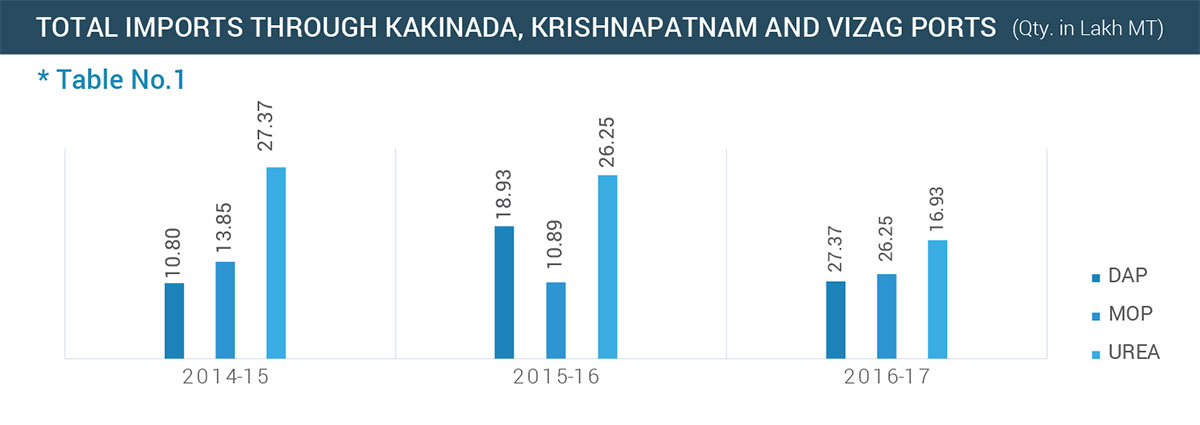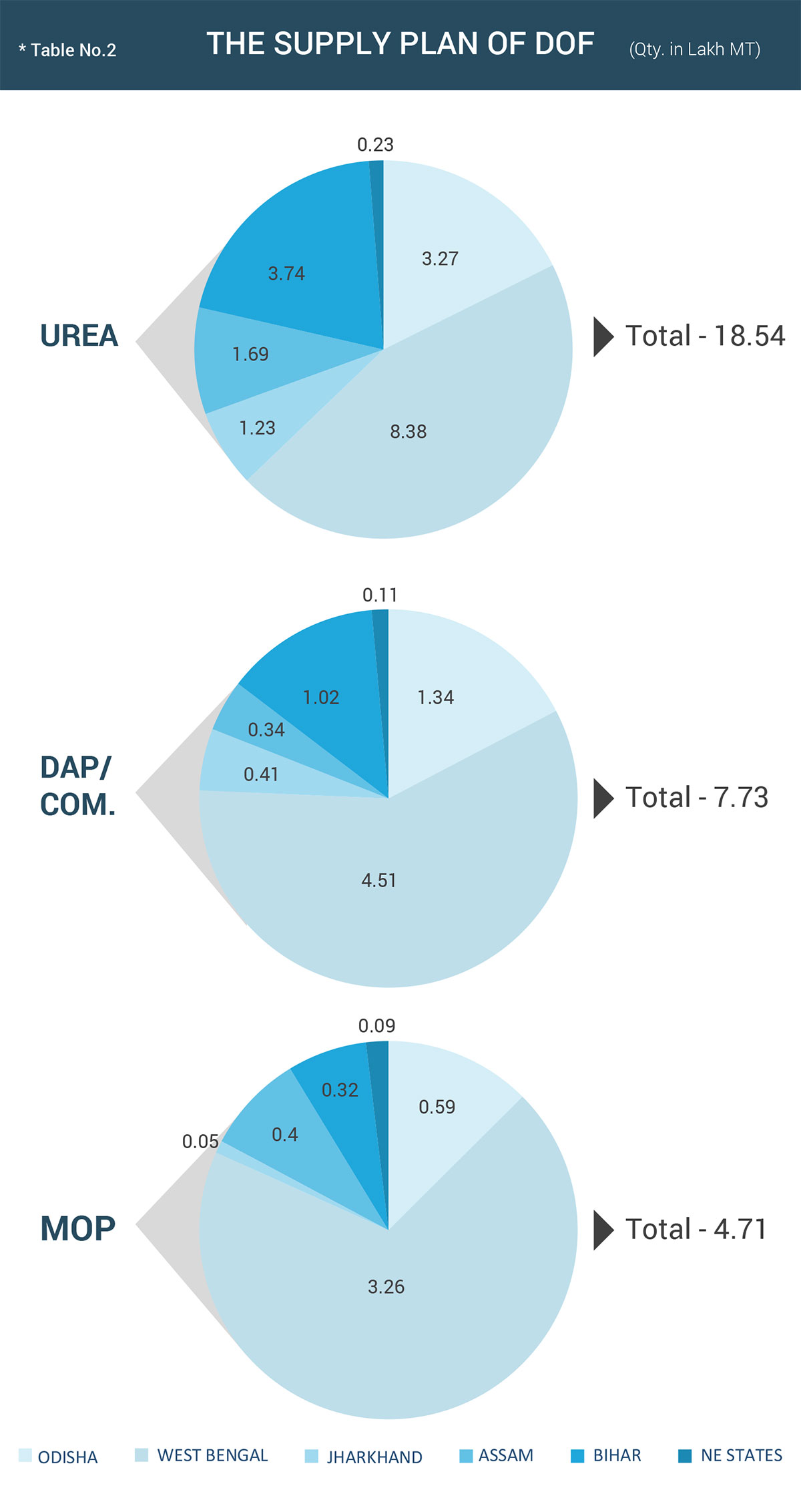India imports three grades of finished fertilizers for direct application by the farmers during agriculture season viz. Kharif (April-September) and Rabi (Oct.–March). The three grades of fertilizers are Urea, Diammonium Phosphate (DAP) and Muriate of Potash (MOP).
IMPORT OF UREA
Urea for agriculture use is under Government control and therefore the import of urea is on Government account. The total requirement of urea is about 30-32 million MT per annum out of which 22-24 million MT is indigenously produced in the country (Urea covers 55% of total Fertilizer requirement). On an average the Department of Fertilizers (DOF) imports about 6 million mts from different global sources (currently from Iran, AG and China) through the State Trading Enterprises (STE) like MMTC, STC and IPL on Global Tender basis for the quantum of imports approved by the Committee of Secretaries, after assessing the requirement of the States during the agronomic season. Despatch of urea from the ports to the consuming Districts/ States is as per supply plan given by DOF.
IMPORT of DAP & MOP
DAP and MOP (P&K) fertilizers are decontrolled mineral fertilizers and are imported on private account. Fertilizer companies are importing DAP fertilizers on their own account and immediately on arrival of the shipments, the DOF gives the supply plan for distribution to the States for direct consumption and the companies are following the supply plan for claiming subsidy under Nutrient Based Subsidy (NBS) policy. DAP is used as a Basil dose for the crops at the beginning of the agriculture season and is mostly imported from international sources. MOP is totally imported on private account as there is no commercially viable source of this product in the country. MOP is used for better yield to the crops as it provides Potash and Chloride nutrients to the soil. MOP is also covered under NBS policy as explained above. MOP is used for by the complex manufacturers extensively. Most of the complex fertilizer plants are on the coastline adjoining the ports as they are import dependent.
Presently, due to lack of adequate infrastructure the States of Odisha, West Bengal, Jharkhand, Bihar and Chhattisgarh are being served by ports at Kakinada, Krishnapatnam and Vizag ports, in terms of the supply plan resulting in huge wasteful expenditure on account of inland freight which is on the Government account.
Comparative statement of total quantity of Urea, DAP & MOP imported through Kakinada, Krishnapatnam, Vizag and Paradip ports in the last three years is as follows: Table no. 1 below

The total consumption of Urea and P&K fertilizers in the eastern and north-eastern States as projected in FAI Stat. 2015-16 is 7.73 lakh mts DAP / Complex; 4.71 lakh mts MOP and 18.54 lakh mts Urea per annum.
The supply plan of DOF is as follows:

The availability of Phosphatic fertilizers is met through imports (DAP is mostly imported) and through indigenous source (Complex Fertilizer Plant) whereas MOP is entirely imported.
The above are also inputs for the two Phosphatic fertilizer plants located at Paradip namely IFFCO with a capacity of 2.0 million mts per annum and Paradip Phosphate Limited with a capacity of 720,000 mts per annum. These two plants have their own captive jetties for receiving their import cargoes.
To cater to the requirement of the fertilizer industry for the North Eastern region, the J M BAXI GROUP is building a world class facility at Paradip in the state of Odisha.
The SPV, Paradip International Cargo Terminal (PICT) has been awarded a concession agreement by the Paradip Port Trust to construct and operate a multi-purpose terminal on BOT basis for a period of 30 years at Paradip. It is situated 210 nautical miles south of Kolkata and 260 nautical miles north of Visakhapatnam.
The multipurpose cargo berth will handle clean cargo including iron and steel products, aluminium ingots, pig iron, finished fertilizers, food grains, sugar, and containerized cargo.
